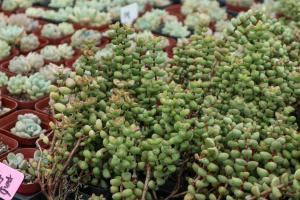Can Lily Bulbs be Planted in Pots?
Many gardeners are interested in growing lilies, but may not have the space for a dedicated garden bed. One question that often arises is whether lily bulbs can be planted in pots instead. The good news is that the answer is yes! Lilies can be successfully grown in pots with a little bit of care and attention.
Choosing a Pot
The first step in planting lilies in pots is selecting a container. It's important to choose a pot that is large enough to accommodate the bulbs and allow for root growth, but not so large that it retains excess water which can lead to rotting. A depth of at least 8-10 inches is recommended, with a diameter of 12-14 inches for the planting area. The pot should also have adequate drainage holes to prevent water buildup.
Soil and Fertilizer
The next step is selecting the right soil and fertilization. Lilies prefer well-draining soil that is rich in organic matter. A mixture of peat moss, perlite or vermiculite, and garden soil can be used to create a porous, nutrient-rich growing medium. Fertilization is also important, and a good-quality granular fertilizer should be mixed into the soil before planting. Additionally, a liquid fertilizer can be used every 2-4 weeks during the growing season to ensure continued blooming.
Planting Lilies in Pots
Planting lilies in pots follows the same basic principles as planting them in the ground. The bulb should be planted at a depth of 3 times its size, with the pointed end facing upwards. The soil should be lightly packed around the bulb to prevent it from shifting while watering. Multiple bulbs can be planted in a single pot, but be sure to allow at least 1 inch of space between them.
Watering and Care
Proper watering and care is essential to the health and blooming of lilies in pots. Watering should be done when the top inch of soil is dry, and care should be taken not to overwater or underwater the plant. Lilies require a moderate amount of sunlight, but should not be exposed to direct sunlight for long periods of time. Regular deadheading of spent blossoms will encourage continued blooming throughout the season. In winter, the pot should be moved indoors or to a protected area to prevent damage from freezing temperatures.
Pest and Disease Management
Lilies are relatively hardy plants, but they can be susceptible to pest and disease problems. Slugs, snails, and thrips are common pests that can damage lily leaves and flowers. Aphids and spider mites can also be problematic. Regular maintenance and monitoring can help mitigate these problems when they arise. Fungal diseases such as botrytis blight and various leaf spots can also affect lilies. Proper sanitation and careful watering practices can help prevent these diseases from taking hold.
Conclusion
In conclusion, lilies can be effectively grown in pots with the right care and attention. Choosing the right pot, soil, fertilization, and care practices can help ensure a healthy and blooming plant. With a little bit of effort, gardeners can enjoy the beauty and fragrance of lilies in their own homes and gardens.

 how many times do yo...
how many times do yo... how many planted tre...
how many planted tre... how many pine trees ...
how many pine trees ... how many pecan trees...
how many pecan trees... how many plants comp...
how many plants comp... how many plants can ...
how many plants can ... how many plants and ...
how many plants and ... how many pepper plan...
how many pepper plan...































